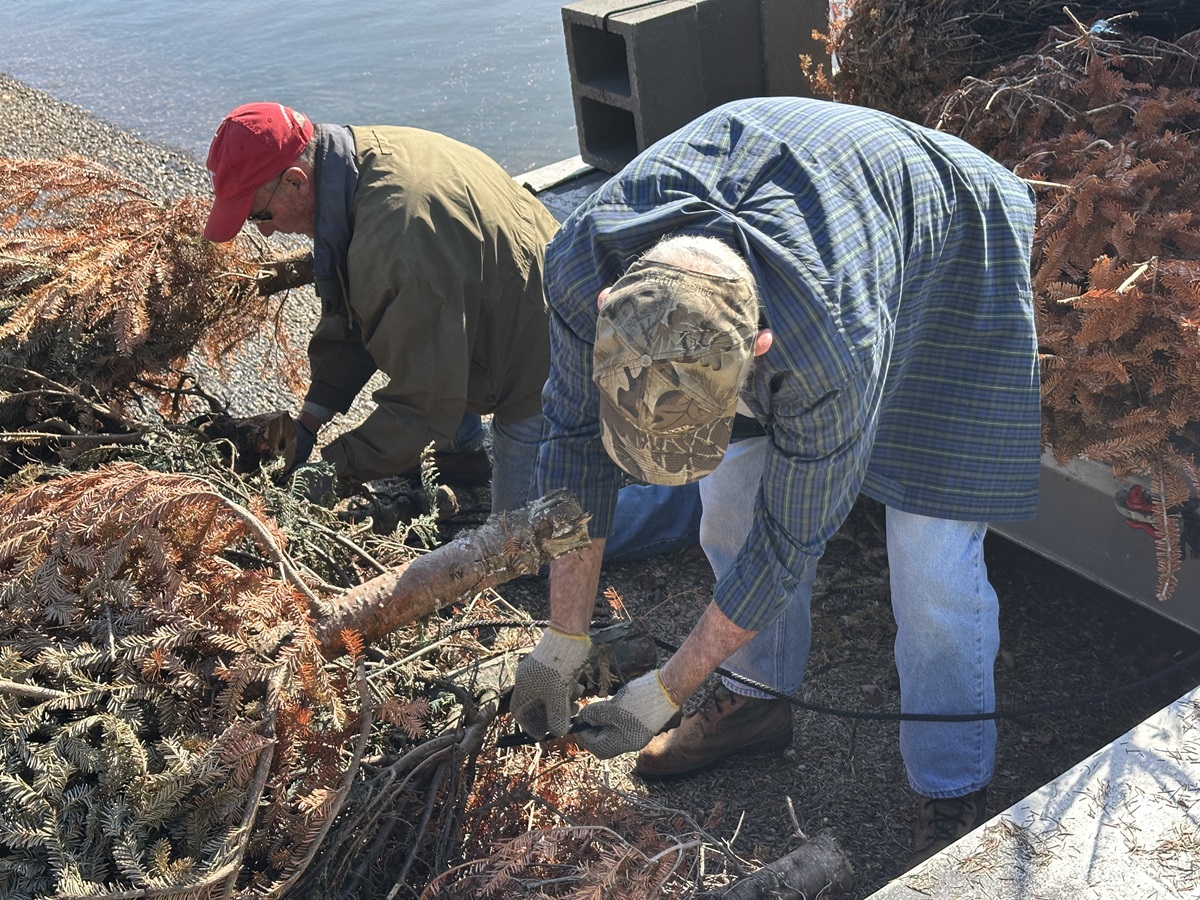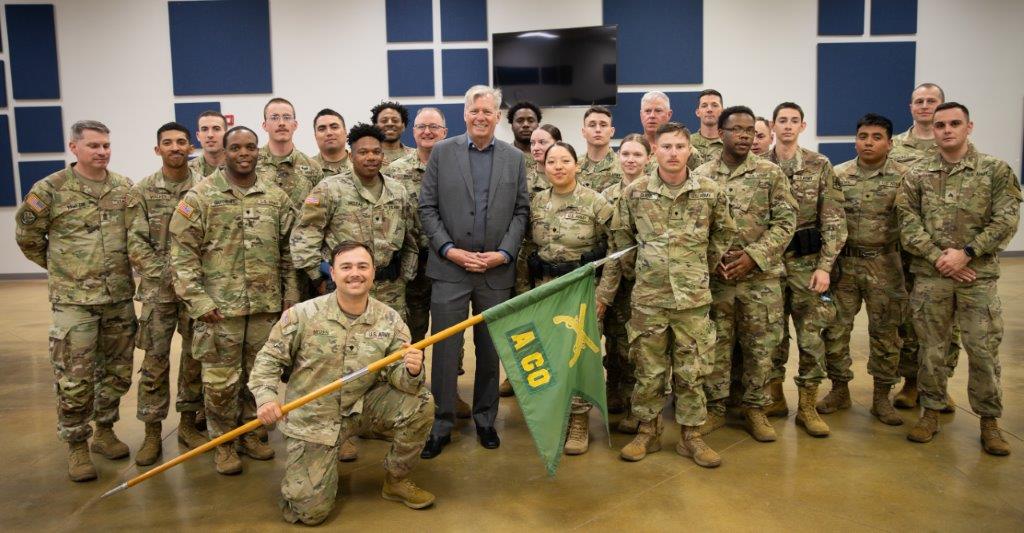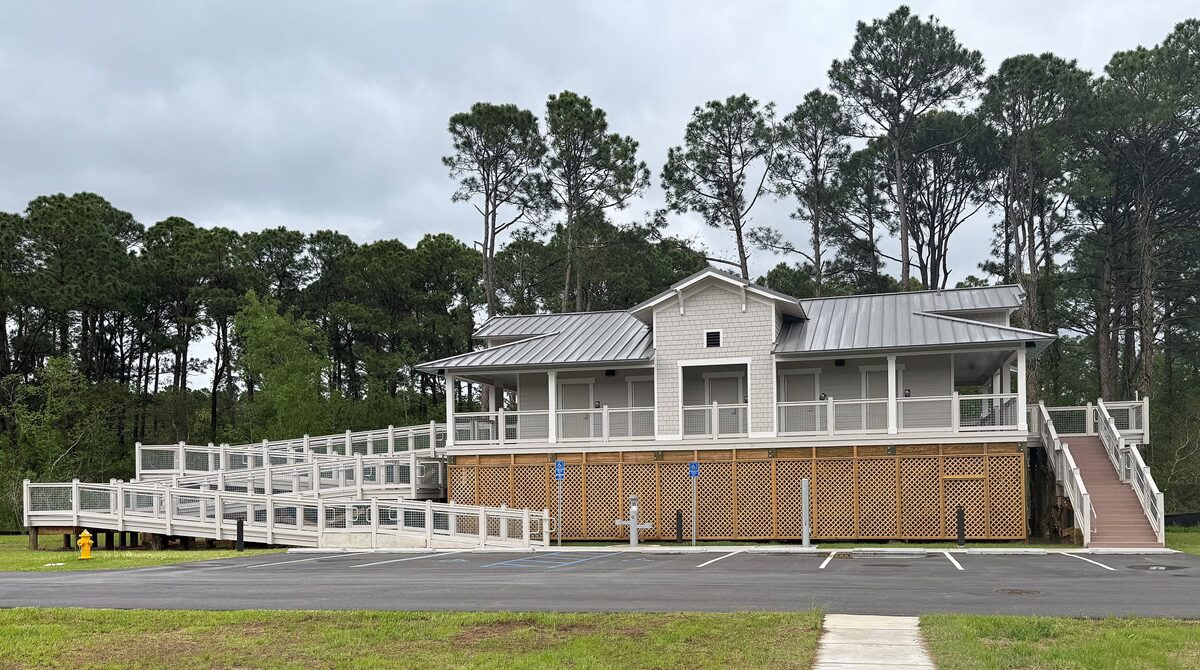Alabama observatories share the universe with the rest of us

The Horsehead Nebula, part of the constellation Orion. (Michael Buford / Von Braun Astronomical Society)
Crystal-clear, winter evenings are fine for stargazing from the roof of the University of Alabama’s Gallalee Hall. The Tuscaloosa observatory is one of several throughout Alabama with mammoth telescopes focused on galactic phenomena. Each one reaches for the stars, and you can, too, since they make time for public viewing.
Here are five observatories and groups across the state sharing the universe with the rest of us.
Gallalee Hall Observatory, University of Alabama
“Some find it overwhelming,” says Jeremy Bailin, associate professor of physics and astronomy at the University of Alabama. Recalling visitor reactions after seeing space through professional optics, he adds, “We have seen people become emotional and tear up.”
Sam Boos, a UA graduate student in physics and astronomy, who works with Bailin, says, “Just seeing the moon up close renders so many details, mountain ranges, craters and terrain. It’s just amazing.”
The university’s Astronomy Group holds monthly “public nights” with free admission and no experience necessary. After a brief discussion about what awaits, visitors ascend to the rooftop and enter the copper-domed observatory atop Gallalee Hall. A telescope about the size of a Civil War cannon awaits.
“To me, the experience of seeing space up close is humbling, realizing how small we are in the vastness of space,” Bailin says. “I may be a tiny bit of the universe, but I am that tiny part that gets to look at the other parts of it. Yes, I am humbled, but seeing it – nebulas, planets, the moon and more – in real time gives me a stronger connection to our universe.”

Jeremy Bailin, University of Alabama associate professor of physics and astronomy, readies UA’s observatory telescope in preparation for night viewing. (Emmett Burnett / Alabama Living)
James Wylie Shepherd Observatory, University of Montevallo
At first you literally cannot believe what you are seeing through the Shepherd Observatory‘s state-of-the-art 20-inch telescope, mounted on a hydraulic pier in a robotic 20.5-foot-diameter observatory dome.
“But I don’t see anything,” a visitor says, squinting through the scope’s eyepiece.
“Give it a few seconds for your eyes to adjust,” says Jecca Shumate, Environmental Education Program director. A few seconds later, often followed by gasps, the magic happens.
“I love watching people’s reactions when first seeing a planet,” Shumate says. “Viewed with the naked eye, people see Jupiter, Saturn and the others as tiny points in a black sky. But then they see it through our telescope.” The “Oh, wow” factor kicks in.
Visitors observe Jupiter’s distinct features with its red spot, a continuously churning hurricane larger than Earth. They count the rings of Saturn, each band made of debris from ice, rocks and asteroids in place since recorded time. “Some can’t believe what they are looking at,” Shumate notes. “They express shock and disbelief.”
Montevallo’s site, which is compliant with the Americans with Disabilities Act, welcomes the public through its educational programs. Observatory visits include day programs for sun gazing. Do not try this at home. Montevallo has a portable telescope specifically designed to view the sun. You do not.
Incidentally, for those interested, a 20-inch telescope similar to Montevallo’s can be yours for about $40,000. Computerized mounting platform and specially designed astronomy building with robotic controlled roof sold separately.
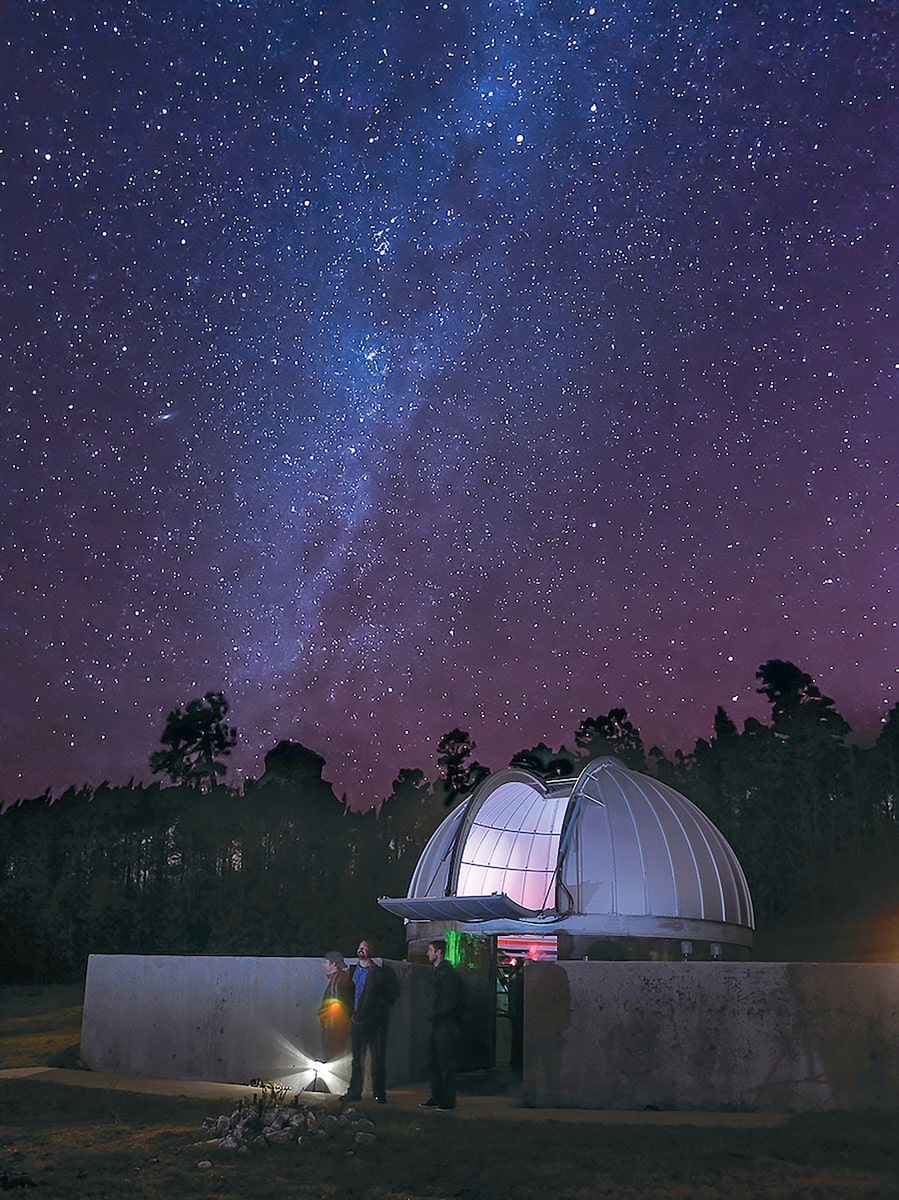
The James Wylie Shepherd Observatory at the University of Montevallo welcomes the public through its education programs. In addition to opportunities for detailed stargazing, the observatory has a telescope designed for safely viewing the sun. (contributed)
University of North Alabama (UNA) Planetarium and Observatory
In 1964, at what was then Florence State College, two-stage construction began for an observatory and planetarium. The goal was to serve the college and the public, with access to both facilities. Fifty-nine years later, the University of North Alabama’s Planetarium and Observatory still meets those needs with a sense of wonder.
“Everybody, of course, wants to see the planets and the moon,” says Mel Blake, UNA’s Planetarium and Observatory director. “But there are also star clusters. They look really nice.”
“The ring nebula is impressive,” he says. “It looks like a smoke ring. Actually, it’s an old star, about 10 billion years old, that ejected gas into space as it died. The same thing will happen to our sun, in about 4½ to 5 billion years.” At that point, life on earth will cease to exist.
On a happier note, the UNA Planetarium and Observatory offers weekly public nights, incorporating discussions of what is up in the night sky with observing what was just discussed.
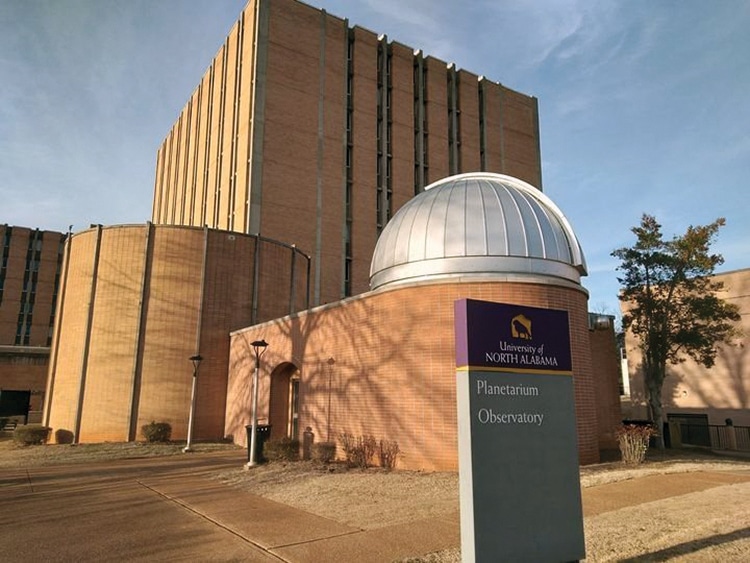
The University of North Alabama Planetarium and Observatory. (contributed)
In addition to universities, Alabama clubs and astronomy-based groups share public viewings.
The Von Braun Astronomical Society (VBAS)
Like Bailin, Michael Buford, president of VBAS near Huntsville, offers similar views about searching the cosmos. “This may sound silly, but I ground myself by looking at space,” he says, from VBAS’ earth base in Monte Sano State Park. “From the first time I looked through a telescope and saw that planets are more than dots in the sky, I was hooked. There is nothing like it.”
VBAS shares its facilities through scheduled viewings. The moon is a popular favorite, but other contenders include Jupiter, Saturn and star clusters. First-time viewers are often amazed.
One young visitor was skeptical.
“Viewed up close, Saturn’s rings are clearly visible,” Buford says. “That often surprises people. We once had an 8-year-old boy look through our telescope. He jumped back and didn’t believe what he saw.” The youngster shouted, “That’s a sticker! You put a sticker with a picture of Saturn on your lenses!”
VBAS public events include planetarium lectures followed by telescope viewing.
In addition, the space place is a legacy of Alabama’s space program. One of the group’s charter members was Wernher von Braun, the missile technology expert who in the 1950s put the rocket in Huntsville’s nickname, Rocket City.
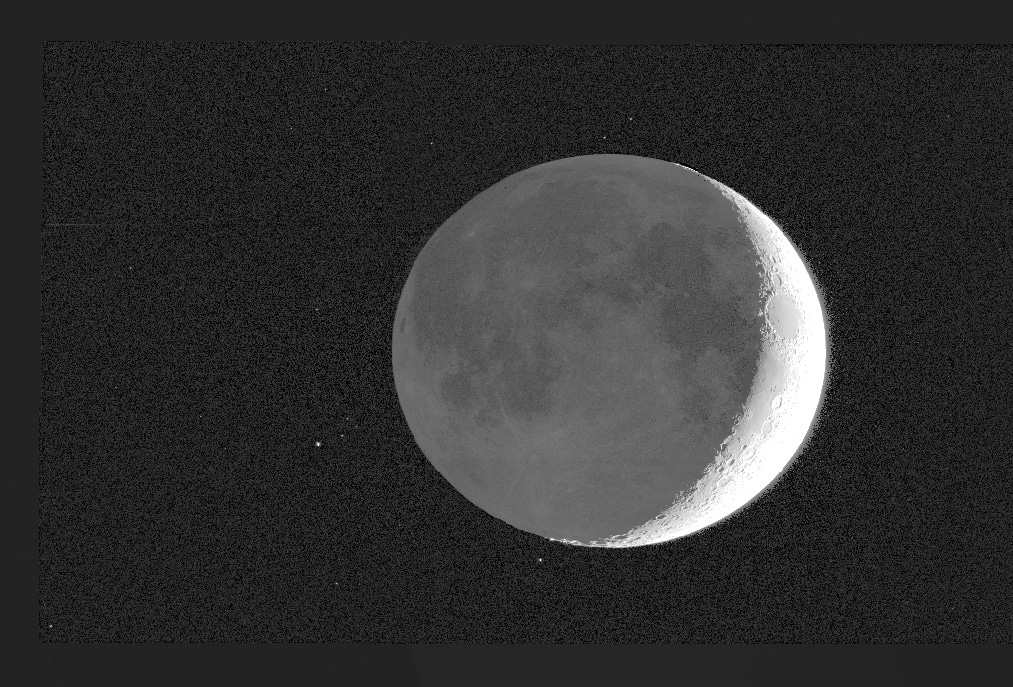
A photo of the moon taken at the University of Alabama’s Gallalee Hall Observatory. (University of Alabama)
Auburn Astronomical Society
There is no party like a star party, and the Auburn Astronomical Society rocks it like a meteor.
The group gathers in scheduled, often remote locations, for unencumbered stargazing. It recently received permission to observe nighttime skies from Heaven Hill on property owned by Russell Lands along Alabama Power’s Lake Martin.
“A constant problem with viewing space is light pollution,” notes the Auburn group’s president, Allen Screws. The more lights around, from cityscapes, homes and business areas, the less visibility one has for stargazing. “But Heaven Hill does not have those issues,” Screws says. “It makes for great viewing.”
The Auburn astronomy hobbyists happily share the experience with others. Though core dues-paying members are about 20, star parties and other events have drawn 100 people or more.
From major universities to societies and clubs, statewide space enthusiasts scan the skies. We are invited to join them for a glimpse into infinity, billions of years in the making, and ready to behold, under Alabama skies.
A version of this story originally appeared in Alabama Living magazine.
